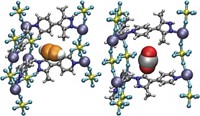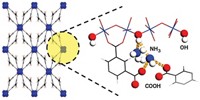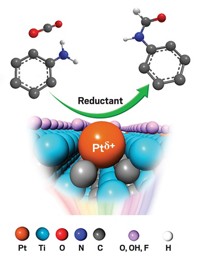Advertisement
Grab your lab coat. Let's get started
Welcome!
Welcome!
Create an account below to get 6 C&EN articles per month, receive newsletters and more - all free.
It seems this is your first time logging in online. Please enter the following information to continue.
As an ACS member you automatically get access to this site. All we need is few more details to create your reading experience.
Not you? Sign in with a different account.
Not you? Sign in with a different account.
ERROR 1
ERROR 1
ERROR 2
ERROR 2
ERROR 2
ERROR 2
ERROR 2
Password and Confirm password must match.
If you have an ACS member number, please enter it here so we can link this account to your membership. (optional)
ERROR 2
ACS values your privacy. By submitting your information, you are gaining access to C&EN and subscribing to our weekly newsletter. We use the information you provide to make your reading experience better, and we will never sell your data to third party members.
Materials
Selective CO2 Sorption
Framework compound adsorbs CO2 at low pressures
by Mitch Jacoby
August 31, 2009
| A version of this story appeared in
Volume 87, Issue 35

A metal-organic framework (MOF) compound composed of aminotriazole-based ligands selectively adsorbs carbon dioxide from gas mixtures at low CO2 partial pressures, according to a study in Chemical Communications (DOI: 10.1039/b911481e). Exceptionally high CO2 uptake has been reported previously for other MOFs, but those studies were conducted at high CO2 pressures (tens of bars). The new study, which addresses CO2 uptake at pressures of up to approximately 1 bar, may lead to strategies for making sorbents for gas purification. University of Calgary chemists Ramanathan Vaidhyanathan, George K. H. Shimizu, and coworkers designed MOFs with amine-lined pores to exploit that functional group’s strong affinity for CO2. By reacting zinc carbonate, oxalic acid, and an aminotriazole under mild conditions, the team formed a porous crystalline material composed of zinc-dimer-aminotriazolate layers that are supported by oxalate pillars. The group reports that CO2 adsorption and desorption cycles were repeated eight times at low pressures with complete reversibility. They add that the material does not exhibit appreciable uptake of nitrogen, argon, and hydrogen under similar conditions.






Join the conversation
Contact the reporter
Submit a Letter to the Editor for publication
Engage with us on Twitter